Sustainability Purposeful Business
Executive summary
Introduction
This report is going to show my outlook and materiality assessment describing, the retail industry’s current strategic focus and sustainable practise by company chosen- H&M (Hennes and Mauritz) Are they adhering to the current the United Nations Sustainable Development Goals for businesses?Also, what H&M can do more to support their con quest to be classified as a sustainable purposeful brand doing more than providing sustainable clothing collections and investing in different sources for manufacturing the company goods and services. If you are seeking fashion dissertation help, analyzing H&M's sustainability initiatives and strategic direction can provide the most valuable insights into the intersection of fashion and sustainability.
Section-1
The sustainability development goals (SDG) were constructed by the United Nations (UN) in the effort to protect the planet, end poverty and improve the lives and prospects of everyone. Even though in 2015, all members of the UN were encouraged to adopt and adhere to all seventeen goals, this has deemed somewhat problematic. As each country have different and sometimes conflicting regulations and legislations, or simply has different needs within their society. Some countries may not be in agreement on which goals are deemed more important within their environments, each country’s economic developments differ from the next. The United Kingdom can be recognised classified as having no poverty in their society compared to Nigeria who according to world poverty clock, has a higher rate of poverty. This indicates that SDG 2 needs improvement’s for corresponding nation Nigeria to reach the global goal.

Chosen Retail Sector
The retail sector is usually a segment of most developed country’s economy, as fashion is a part of day to day life creating jobs and high consumer spending. Overall, the retail industry is wrought from the private sector, liable for the division of finished goods to its buyers. The retail sector concludes of other operating retailers managed by major corporations either; department stores (John Lewis, Debenhams)discount stores (B&M, Risky,Peacocks), or managed by individuals or families (Specialising Boutique, Corner store i.e.Nisa). The retail sector now also includes e-commerce businesses. Retailers participate in B2C trade, business-to-consumer transactions in shops and other online store segments. Due to the pandemic corona virus a lot of businesses have had to adapt to the ever-increasing demand for online shopping as well as new legislations surrounding the way consumers can now shop. For the purpose of the module the company chosen, Hennes and Mautritz, find below a list displaying Hennes and Mauritz being ranked 43in the Global powers of retailing report, top 250 within retail globalization as a whole.
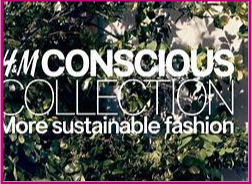
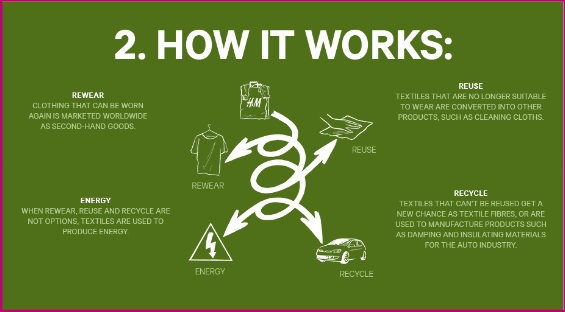
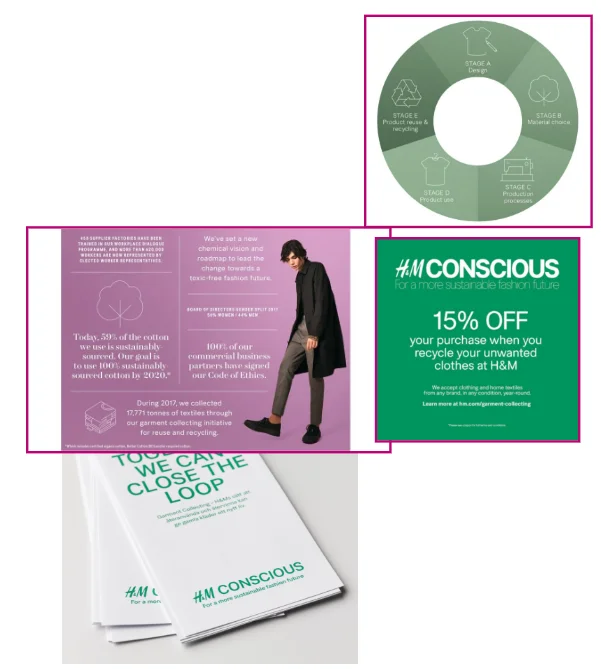

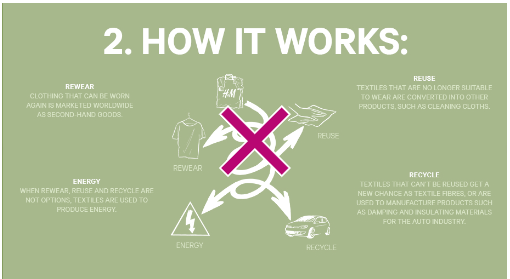
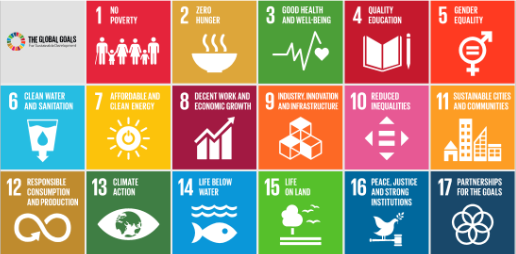
- FY2017 Retail revenue rank-43
- Name of company-H&M Hennes & Mauritz AB
- Country of origin- Sweden -
- FY2017 Retail revenue (US$M)-23,197**
- FY2017 Parent company/ group revenue(US$M)-23,197**
- FY2017 Parent company/ group net income¹ (US$M) -1,877
- Dominant operational format –Apparel /Footwear Speciality
- Countries of operation FY2012- 2017- 69
- Retail revenue CAGR² - 10.6%
(Global Powers of Retailing, 2019)
(Analysis of financial performance and financial operations for fiscal year 2017/18 through June until present sourced from company annual reports
Section-2
Critically examining sustainability and stakeholder issues for clothes Retail Sector- H&M
Even though the retail industry may positively financially contribute towards the economies in which it conducts its business transactions in through sales and taxes. H&M although as a company may contribute towards the industries in which it sells itsgoods, it doesn’t have the same positive correlation to the GDP in India where its items are manufactured. The most pivotal aspect of H&M’s supply chain is the manufacturing of its goods. Ultimately the most important sectors of their business model are being exploited. Considering the influence social media has particularly for the retail sector. H&M should take action to avoid coming under scrutiny for exploiting its workers which is deemed to be modern day slavery. This can be done by following the guidelines and regulations under the cooperate governance code of conduct 2018, adhering to governing laws and enforcing contractual agreements and guideline’s when dealing with agents; to avoid the agency problems from occurring. H& M could even go as far as producing their goods in countries with laws in place which protect its workers for example, countries offering their constituents a national living minim wage. Or, H&M can offer its employee’s in India a wage package that reflects its importance to the business.
Liveable consumption and commodities are associated with bringing awareness towards efficient energy usages and the ease of access to essential services, environmental and equitable employment contributing to an evolved quality of life suitable for the majority and sustainable businesses. H&M have created awareness through campaigns collaborating with sustainable businesses and is consistently producing eco collections making use of their recycled materials. The brand has structured a voucher scheme in exchange for consumers old, unworn clothes in any condition, from any retail brand, encouraging garment collecting at all H&M stores globally which instates the need to avoid consumers taking their unwanted attires to a landfill; reducing material waste. Elimination of plastic straws, any plastic materials at their in-store cafes are there. Their partnership with a global recycling company I:CO collects the donated garment’s categorising each into different sections, for different methods of recycling which consists of; repurposing unbearable clothing for materials for insulating households or car interiors. Recycling worn out fibres to be brand new and purposeful once again. Manufacturing the implementations of sustainable consumption and production assists in creating the core, all-round development procedure, of challenging the economic figures to reduce measures; where social and environmental costs are concerned, channelling sustainable business measures to enhance the economic competition and minimising impoverishment and all waste.
Even though H&M have gone to great measures to maintain their sustainable business practises the company still need to adhere to the SDG goals, to add further referring to the chart the SDG goals 7,9,10,11 are matters up for improvement for H&M to be classified as an official sustainable brand. To indulged more on how their communicating with their current stakeholder’s, utilising all aspects of communication, maintaining a transparent annual business report including the companies audit, sustainable practises, the energy costs for their manufactured goods, how they’ll better incorporate efficient energy providers by using solar panelled buildings in the near future like technology retail brands such as Apple Inc, also to note making renewable energy adaptations Unilever reaching its goal of carbon neutrality by 2030. Adopting new strategies and goals for impactful improvement towards long term sustainable goals would be beneficial for the brand.
At present resources use of Materials, subsoil assets are ever-increasing. The increase within the consumption paradigm contributes towards the global climate crisis and environmental decline. Textile, wood and food product companies, as well as its suppliers are now adapting to the societal trends and global reform providing at least one form of sustainable-sourcing practice.
52 percent of companies in a recent survey of 449 publicly listed companies report using at least one sustainable-sourcing practice (KPMG textile Report Pdf)
A perspective to consider, doing more with less; indicates the net welfare grows with economic business activities which arise by lowering the amount of resource used who naturally pollute and deteriorate during its life cycle whilst simultaneously adding a better value to life. For example, the production of particular goods sold by H&M, when study and material science is applied it’s possible to have particular fibre mixed and renewed, created to be biogradable if not recycled accordingly. Encouraging the use of production material, in place of investing or purchasing fabrics sourced from raw materials would also be advantageous. Using more production materials can cause less harm within our environments.
Providing a transparent network of information in regards to H&M’s supply chain which includes and will benefit its consumers, and producers. Bringing transparency to the brands target markets by keeping consumers educated and motivated by issuing them with sufficient knowledge via labels, company standards or innovation, association and engagement within the sustainable public market amidst of others, how they are tackling everyday SDG goals and maintenance to becoming a sustainable purposeful brand.
There’s been a mention by Kristen Leo (Sustainability Activists), that more can be done to enhance the culture of sustainability of textiles, clothes product life cycle. Methods which involve producing ethical textiles, fibres made from technology AI science, bio gradable threads, dyes, ink; measuring water consumption through smart technology and operating management.
It has been suggested with SDG 12 in mind, the company must have significant knowledge on stakeholders and other functioning business implementations which can assist in the building of sustainable materials and services for all the customers. A circular business model would demonstrate and target the economy aspects of eliminating poverty and unemployment as jobs are consistently being created in assisting the awareness and structures needed for anew normal, sustainable ethical way of trading, present consumers spending powers, shopping choices, energy supply choices as well as better material choices.
No poverty
The first SDG goal is concerned with the 700 million people living in poverty worldwide. This goal is closely linked with the textile retail industry as the majority of medium to large textile retailers locate their factories in countries with high levels of poverty. An example of this is India. India is one of the top textile’s producing countries in the world below China a high producer of raw silk material. In the year 2018, they exported 18 billion U.S. dollars’ worth. (Statista (2018))
Ethical trade can be defined as the responsibility a retailer accepts to help improve the lives of those who are involved in the production of their products. (Ethical trading(n.d)) This may be small family farmers or workers in a supplier factory. Many of the workers are based in third world countries. Laws are usually corrupt in developing countries in regards to trading; H&M have abused this metric and lawfully used this advantage where accesible to cut bcorners around costs with this selfish brand strategery, which is evidentaly debateableand in many ways terribly unethical as a whole for a majot brand this demonstrates poor business choices. By elimanating particular expenditure costs, where labour is provided, country laws vary also differ. India, Bangaladesh as a society have a governing law which has limitations towards their civilians salary. This limitation for th indian nationals working in fashion is suggested to sustain company interest from the western world. underdeveloped countries in let European/American businesses create and build factories and hire civilans from the nation of resdience to then sell goods into up and coming or developed societys at present in correspondence with the SDG goals chart. Creating jobs will help demolish poverty but its pivitol for brands to not the abuse their power with selfish stratergies for better development for a fast fashion brand like H&M.
Sustainable Cities and Communities
The SDG11mention popular problems such as declining infrastructures, lack of funds to provide basic services,insufficient number of adequate housing. This goal is focused on City development, providing opportunities for all, creating and developing efficient infrastructures, transport and more. (UN.org)
In correspondence with the Paris Agreement, knowledge on local and global issues which assist the least developed states, building eco-friendly factories, collaborative partnerships between cities and stakeholders, private sectors (H&M), community-based foundations (H&M Foundation) the brand are active finding a sustainable solution.
SDG13 is also a part of the textile industry business challenge present, providing substantial value to the need for creating modern ethical adjustments and important moderate measures to better handle the impact of natural resources below the waste management activities. The organisation is able to manage waste and improve the business sustainability in long run.
To enable assistance, for reduction within green house gas emissions its suggested that better planning procedures, legislation’s are brought forward to lessen the damage to existing eco-systems endorsing or driving economic investment for usage in low-carbon or solar technologies within H&M’s infrastructure communities which can help reduction of the global greenhouse gas emissions across all factories using excessive energy to create new fibres or recycled fabrics. There is necessity of the new policies and principles for the new business to reduce the carbon emission and run the business efficiently. Solar technology and low carbon activities are also other options for the entrepreneurs to develop the business in a sustainable manner. Critical infrastructure and human resource management program of the company are mandatory to be developed well, so that the leader can lead the team members and achieve future success through managing the business sustainably (Rezaee, 2016).
Gender inequalities
The Gender equality Goal is focused on women’s empowerment, discrimination against women, that being physical or sexual violence, harmful practices such as child marriage and female genital mutilation. Equal access to health care, education, well-paid jobs and representation in political and economic decision-making processes are areas the gender equality goal aim to address. (UN.org) The textile industry is historically known for being one of the most female-dominated industries in the world. In the Chinese textile industry, female workers account for 70% of garment workers, as high as 9-% in Cambodia and 85% in Bangladesh. (Fashion Revolution (2017))
Reduced Inequalities
The fashion industry as of many other industries has income inequalities issues which is a source for solving. Performance and profitability indicators should highlight develop and optimise wage policies to be of and follow economical standards and methodology. The reduction of SDG 10 obstacles within this brand will equip them to adopt wage protection policies. H &M had concurrently continued to not meet these goals in the past with several acquisitions of not paying workers lawful pay. The major recommended suggestions for the organisation will be the cost structure break down which is considered as one of the effective tactics to manage pricing of their products and services as well as reduce the cost of operation and manufacturing activities. This is beneficial for the organisation to provide their products at affordable price and retain more long run customers. In addition to this, the wage payment activities must be managed well where all the employees must be paid at a fair wage principles, in this regard, the fair wage management and structured salary at the organisation needs to be developed to maintain the employee morale and fulfil the commitment towards the staff members of the organisation and it further helps to improve ethical practice of the brand an secure future sustainable development.
Also inserting into the assessment, the company’s definition of ‘Fair Living wages’ attached with legislated methodology to calculate a ‘’fair wage’’ and how the company ensure itsit’s definitely paid. Refineddefinition of the definition from companies’ perspective, minimum wage in solidifies suitable work contracts for production countries.
Climate Action
H&M have a KPI (Key Performance Indicator) goal towards the climate action in aid to; change CO2 emissions from their own operations to reach SDG 13 goal towards Climate positive by 2040. Supporting least developed countries encompassing technical and financial assistance with building sustainable buildings likes eco, solar energised industrial builds; built with solar panels and solar energy. Making use of local materials to maintain factories an environment in healthy balanced conditions has its crucial impacts.
With the textiles industry
According to The World Bank, dyeing and finishing treatment given to fabrics are directly responsible for an estimated 20 percent of global industrial water pollution. (KPMG)
In addition, approximately 280,000 tons of largely non-biodegradable dyes are discharged annually either to wastewater treatment plants or directly to the environmentThe value chain is the largest user of the $14.5 billion commercial dyes and pigments industry, which is predicted to reach $42 billion by 2021. ,Hence, it is necessary to manage waste and improve business sustainability in long run by effective value chain management. The suppliers and the technical staff members at the organisation focus on the management of the chemical compound in the organisational products and operations so that it would be reduced in future to manage the brand sustainability.Utilising the resources such as ZDHC’s wastewater guidelines can be tailored to the capacity of companies and the value chain is a potential step to mitigate the negative environmental impacts. ZDHC on the other hand offers a Chemical Module which enables the companies to use one online system to source safer and replace non-conformant chemicals (Scarborough, 2016).
Maslow’s Hierarchy Theory
Maslow’s Theory proposed that peoplewant beings, that will always want more and what they want is dependent on what they have already. (Mullins & Christy P.261) These are people’s most basic needs such as food and water, oxygen to breath, activity, sensory and sleep. These needs appear at the base of Maslow’s Hierarchy labelled psychological.
Evolution of sustainability in sector
According to the Clean Clothes campaign making a living wage by age standards is an evolution goal to focus on for the company; as take home pay is $100> living wage >$136 is the minimum wage as it says in Asian authorities legislations; as they anticipate if prices are risen the prices businesses will take their businesses elsewhere as it’ll cost less to produce, the government doesn’t allow workers to earn more than this a bonus for the entering company, Today’s hunger strike in Bangladesh should serve as a stark reminder that the announced minimum wage of 8,000 taka will leave many workers and their families hungry and unable to cover other basic living cost.In Bangladesh, it is a serious issue to provide sufficient wage to the suppliers and the distributors of the organisation and in this regard the Bangladeshi Unions Minimum Wage demand is not met and there is unfair distribution of the wage and salary among the staff members and the suppliers. It becomes a major issue to maintain the National Minimum Wage to retain the workers and maximise their contribution in achieving the organisational success in near future (Delai and Takahashi, 2016).
Hence why the; Strategic suppliers are just one part of the supply chain, and that H&M must consider how they will implement changes through the rest of the supply chain, including subcontractors.
- Flexible work hours>environments
- Slavery Act statement, contracts and human rights laws to be complied by European standards abroad by any European operating brands with factories in Asia and Developing countries who trade.
- Detailed information about efforts made within existing living wage initiatives such as ACT
- Minimizing 17seasonal inventory textile creations, waste and the production of clothing at the expense of others in developing rural areas.
- Ethical corporate strategy; in innovation, training and brand management meeting all SDG metrics.
- Elimination ofgreen washing provides evaluations and evidence of eco work measures and analyses.
Adopting circular business models by designing products with their next lives in mind and using inputs recycled from other industries can help capture this lost value. The circular economy model is fruitful for the organisation to be sustainable in near future and run the business successfully by eliminating waste, creating employment opportunities in the country, promotion sustainable consumption habits, using sustainable materials and creating values for all the stakeholders, engaged with the business. The supplier are motivated in the workplace where the leader tries to encourage their creativity and innovation to reduce pollution, utilises the sustainable materials and create the products efficiently to meet the customer’s needs and preferences (Garcia et al., 2016). Through these activities it would be possible for the organisational entrepreneur to create natural system and protect the environment and natural resources as well. It is a system level change and a long term procedure to create global partnership for sustainable business management.
Eliminating transportation costs and air pollution by having factories in the UK and EU where the brands head offices are based reducing stock imports, exports processes. Fast manufacturing process further influence the organisation H & M to not produce their products in house and the products are maintain manufactured by more than 900 suppliers across the globe and hence it is the responsibility of the suppliers of H & M to manage business sustainability and produce the products efficiently by sustainable materials and minimising the waste.

About H&M
Second largest retailer in the world after Index Swedish apparel retailer Hennes and Mauritz known as H&M subsidy brand name associated with the brand logo. Owning 4000 clothing stores worldwide, with plans for 7000>8000 more in the foreseeable future. At its peak reaching a level of proliferation amongst its brand rival Inditex who operate the brand Zara. H& M’s fast fashion offers consumer the latest replica runaway attire; with two main collections each year, one in spring and one in fall within each season there are several sub collections that allow H &M to consistently refresh apparel inventory. Their primary collections are traditional long-lead items; the brands sub collections (Fast Fashion produce) are in trend with short lead seasonal ties (Rezaee, 2018).
H&M have been operating business since 1940s manufacturing goods. The brands associated with H&M Home/Foundation, Cos and Monki. The brand engages in the textile industry marketing clothes and related trends. The brands target demographics caters to all the family, home textiles including cosmetic products. The company offers its products to branded stores over 40 markets as well as online sales in Europe, The United Kingdom and USA among other countries.
The aim of the organisation H & M is to retain the customers and improve engagement with them by providing quality products and efficient services (Bellucci, Bini and Giunta, 2020). The organisation focuses on educating the customers and let them understand about the sustainable business management so that the individuals can engage with the brand and make effective purchase decision for the quality garments of the company (Fashion united.com, 2017).
Section 3-
H&M’s Materiality Assessment
H&M have constructed a complex assessment that thoroughly addresses the needs and interests of stakeholders in the current and near future. This assessment details their human rights policies which includes risk assessment processes to help identify any risks of action needed or possible risks of doing harm in their operations and their supply chain. The companies supply chain and distribution strategies challenge the assessment statements. As it is been evident the company are still researching how to differ materials in their down cycling process, in search for various ways to calculate energy consumption used and wasted. This information isn’t visible on the matrix grid.
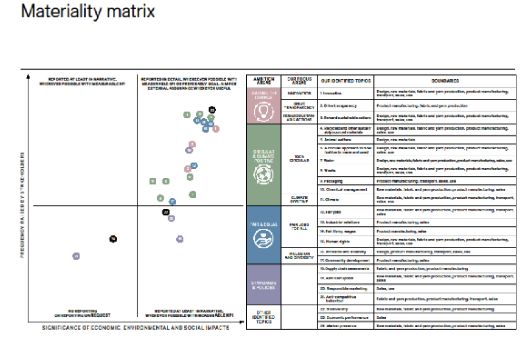
Improvements for H&M’s Assessment
According to Kristen Leo the brand is yet to provide the public with a chemical’s traceability analysis. They have a deadline to reach this goal by 2030, as the company are unaware of all the fibres in their materials. Transparency in regards to the down cycling which forms into insulation or, combustibles for energy production H& M to define the procedure currently isn’t on the materiality ‘matrix’ graph. Please see inserted image of H&M Materiality assessment grid.
Analysis report of water consumption and wastewater management.
Encourage a shift toward circular business models within their supply chain, open innovation model for investment and structuring the plant based, manmade cellulosic fibres, replacement textiles for longevity, a sustainable use.
Acting on H&M’s 2013 commitment in a meaningful way would include:
- A detailed road map on wage increases, with time-bound, measurable wage level increase targets and time-bound actions in the field of purchasing practices.
- A clear investment in long term, sustainable relationships with factories.
- Real wages of the company H&M must be developed well for effective supply chain management so that the suppliers can get fair and structured wages as per their job role and responsibilities. (Turnaroundhandm.org).
Designated Solution recommendations list above.
Concluding with; According to the Clean Clothes campaign making a living wage by age standards is another goal to focus on as take home pay is $136> living wage $100 minimum wage Indian legislations as they believe if they raise; the prices businesses will take their businesses elsewhere as it’ll cost less to produce, the government doesn’t allow workers to earn more a bonus for the entering company.The strategic suppliers of the organisation are playing crucial role in managing the business sustainability where they try to be creative and innovative in managing their business efficiently. The staff members and the employees under the supply chain are also efficient to follow the main supplier and maintain the product quality and sustainability by reducing waste, green house gas emission, waste management and increasing the use of sustainable and organic materials.
In order to mitigate the issue of lack of living wage benchmark for the suppliers, the organisation must focus on restructuring the salary and wage rate for all the suppliers and employees through managing transparency and accountability so that it would be possible to create fair decision and pay each supplier efficiently to achieve future success by retaining them in long run.
Sustainable change through textile innovatory and investment will allow this brand to remain relevant and ethical meeting all SDG’s for a purposeful business and sustainable brand in an industry causing materiality concepts to be consistently adapted otherwise may affect the future of the planet and business trade off.
Section-4
Reference List
Books and journals
- Dauvergne, P. and Lister, J.,2013 Eco-Business - A Big-Brand Takeover of Sustainability. Massachusetts: Mit Press.
- Global Powers of Retailing, 2019, . [online] Available at: https://www2.deloitte.com/content/dam/Deloitte/global/Documents/Consumer-Business/cons-HM Group Sustainability Report_2018 FullReport.pdf
- global-powers-retailing-2019.pdf.
- HM Group Sustainability Report_2018 FullReport.pdf
- Pearson College module reading list, n.d. file:///D:/Users/Onenda%20Taembo/Downloads/HM_Bangladesh_September%202015.pdf
- SDG11 -SUSTAINABLE CITIES AND COMMUNITIES.,n.d. [online] Available at: https://books.emeraldinsight.com/resources/pdfs/chapters/9781787569249-TYPE23-NR2.pdf.
- Threading the needle: Weaving the Sustainable Development Goals into the textile, retail.
- Bellucci, M., Bini, L. and Giunta, F., 2020. Implementing environmental sustainability engagement into business: sustainability management, innovation, and sustainable business models. In Innovation Strategies in Environmental Science (pp. 107-143). Elsevier.
- Rezaee, Z., 2018. Supply chain management and business sustainability synergy: A theoretical and integrated perspective. Sustainability, 10(1), p.275.
- Rezaee, Z., 2016. Business sustainability research: A theoretical and integrated perspective. Journal of Accounting literature, 36, pp.48-64.
- Garcia, S., Cintra, Y., Rita de Cássia, S.R. and Lima, F.G., 2016. Corporate sustainability management: a proposed multi-criteria model to support balanced decision-making. Journal of Cleaner Production, 136, pp.181-196.
- Delai, I. and Takahashi, S., 2016. Sustainability management evolution: literature review and consolidative model. Revista de Administração da Universidade Federal de Santa Maria, (9), pp.115-131.
- Scarborough, N.M., 2016. Essentials of entrepreneurship and small business management. London: Pearson.
Websites
- Circular economy, 2019a). Circular Economy in Fashion. [online] The Fashion Retailer. Available at: https://fashionretail.blog/2019/04/01/circular-economy-in-fashion/.
- Dauvergne, P. and Lister, J.,2013 Eco-Business - A Big-Brand Takeover of Sustainability. Massachusetts: Mit Press.
- Deloitteuk, 2019b. Retail Trends 2019 | Deloitte UK. [online] Deloitte United Kingdom. Available at: https://www2.deloitte.com/uk/en/pages/consumer-business/articles/retail-trends.html.
- Ethical trading, n.d.. About ETI | Ethical Trading Initiative. [online] www.ethicaltrade.org. Available at: https://www.ethicaltrade.org/about-eti [Accessed 9 Aug. 2020].
- Fashion Revolution, 2017. Home - Fashion Revolution. [online] Fashion Revolution. Available at: https://www.fashionrevolution.org.
- Fashion Revolution, 2015). Exploitation or emancipation? Women workers in the garment industry - Fashion Revolution. [online] Available at: https://www.fashionrevolution.org/exploitation-or-emancipation-women-workers-in-the-garment-industry/.
- Fletcher, K., 2013 Sustainable Fashion and Textiles : Design Journeys. [online] www.taylorfrancis.com. Routledge. Available at: https://www.taylorfrancis.com/books/9781315857930 [Accessed 9 Aug. 2020].
- hmgroup.com.,n.d. Materiality. [online] Available at: https://hmgroup.com/sustainability/sustainability-reporting/how-we-report/materiality.html[Accessed 9 Aug. 2020].
- Pivacysense, 2016. The Difference Between the Private and Public Sector - PrivacySense.net. [online] PrivacySense.net. Available at: https://www.privacysense.net/difference-between-private-public-sector/
- Statista.,2017 Top 10 textile exporting countries | Statista. [online] Available at: https://www.statista.com/statistics/236397/value-of-the-leading-global-textile-exporters-by-country/.
- The Global Goals., 2016). Goal 11: Sustainable Cities and Communities. [online] Available at: https://www.globalgoals.org/11-sustainable-cities-and-communities.
- turnaroundhm.org., .d. Turn Around H&M. [online] Available at: https://turnaroundhm.org/.
- united nations, 2019. Documents. [online] Un.org. Available at: https://www.un.org/en/sections/general/documents/index.html.
- ZawThiha Tun (2016). H&M: The Secret to its Success. [online] Investopedia. Available at: https://www.investopedia.com/articles/investing/041216/hm-secret-its-success.asp.
Dig deeper into Sustainability and Ethics in the Fashion Business Cycle Nike with our selection of articles.
- 24/7 Customer Support
- 100% Customer Satisfaction
- No Privacy Violation
- Quick Services
- Subject Experts



